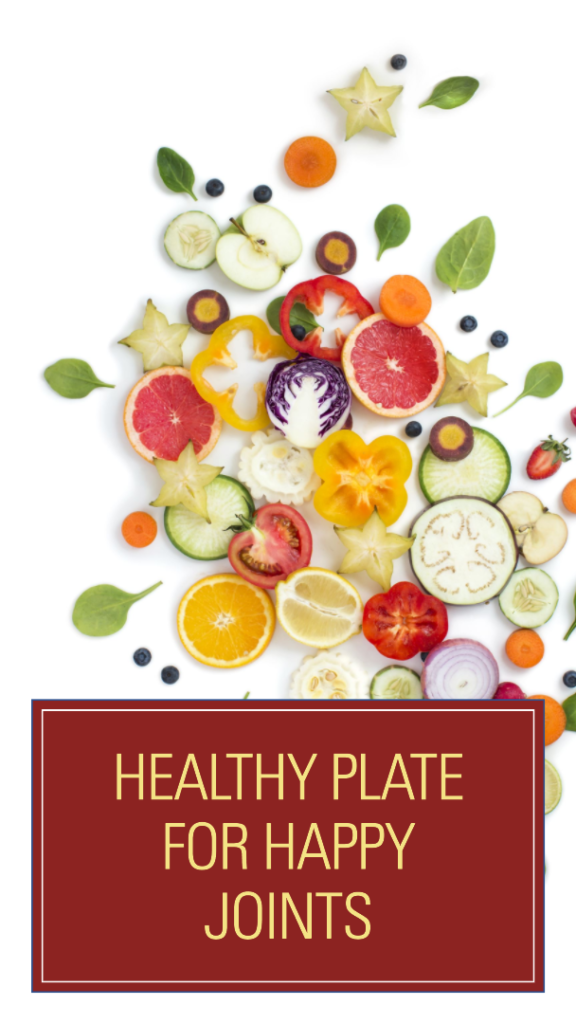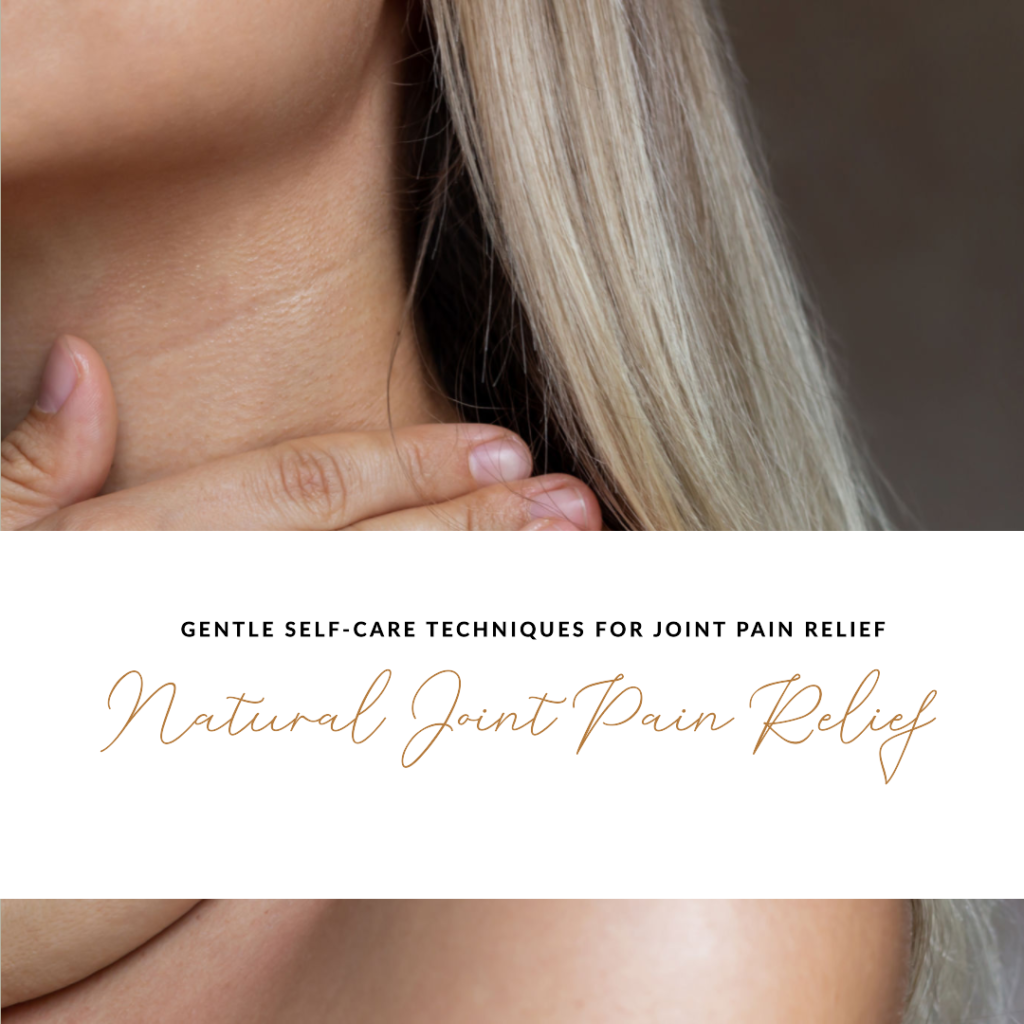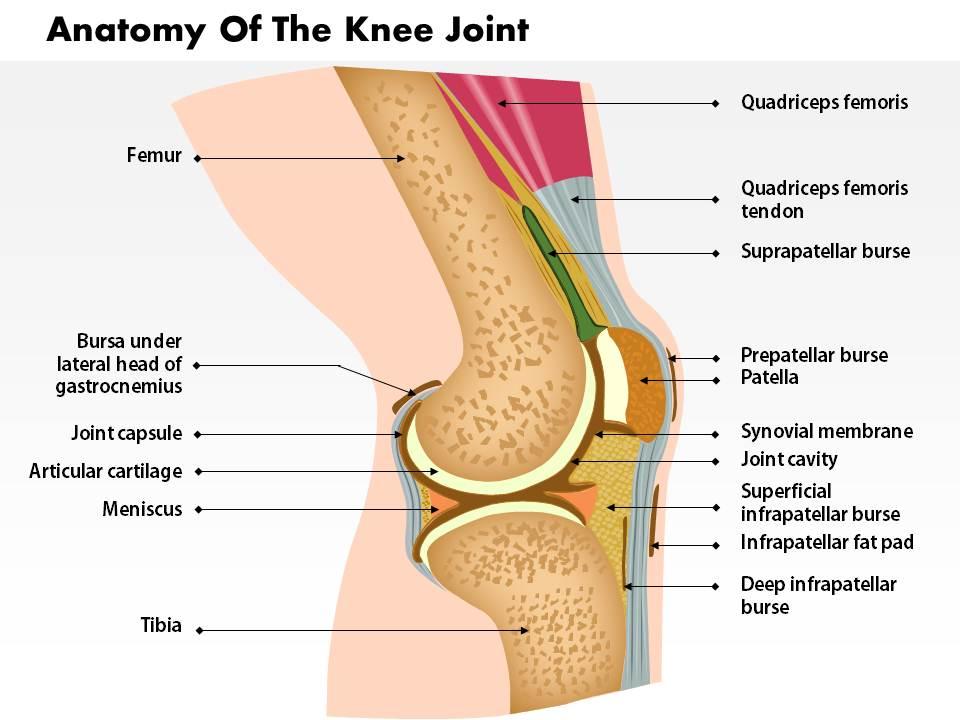Welcome to the world of joint health! As we age, it becomes increasingly important to take care of our joints to prevent age-related stiffness and pain. Whether you’re a woman in your prime or someone who wants to ensure a healthy future, understanding joint health is key to maintaining an active and fulfilling lifestyle.
In this article, we’ll delve into the intricacies of joints, explore the risk factors for joint pain and stiffness, and provide practical tips to prevent and treat these issues.
Understanding Joint Health
Before we embark on this journey of joint care, let’s first grasp the concept of joints. Joints are like the hinges in our bodies that allow movement and flexibility. They connect our bones, providing stability and enabling smooth motion. However, like any complex mechanism, joints can encounter problems over time.

Age-related joint problems can manifest in various ways. Osteoarthritis, a common condition, occurs when the protective cartilage that cushions the joints wears away, resulting in pain, stiffness, and reduced mobility. Another prevalent condition is rheumatoid arthritis, an autoimmune disorder where the immune system mistakenly attacks the joints, leading to inflammation and joint damage.
Understanding the structure of joints helps us appreciate their function. Imagine joints as intricate dance partners—each joint has its unique choreography, allowing us to move seamlessly through life’s motions.
For example, the hinge joints, like those in your knees and elbows, enable bending and straightening movements, while ball-and-socket joints, such as your shoulders and hips, allow for a wide range of motion in multiple directions. These joint movements are facilitated by cartilage, a smooth, rubbery tissue that cushions the ends of bones, and synovial fluid, a lubricant that reduces friction during movement.
Risk Factors for Joint Pain and Stiffness
Understanding the risk factors associated with joint pain and stiffness can help us take proactive steps in prevention. Several factors contribute to these issues, such as:
- Age: As we gracefully journey through life, our joints experience the passage of time. The wear and tear on our joints become more apparent with each passing year, increasing the likelihood of stiffness and pain. However, aging doesn’t have to equate to surrendering to discomfort. By nurturing our joints, we can age with grace and vitality.
- Gender: Nature’s embrace bestows women with unique strengths and vulnerabilities. Women are more prone to age-related joint problems, especially after menopause, due to hormonal changes that can affect joint health. Estrogen, the hormone that blesses women with femininity, also plays a role in maintaining healthy joints. As estrogen levels decline during menopause, the risk of joint issues increases. However, knowledge is power, and armed with this understanding, women can take proactive measures to safeguard their joint health.
- Genetics: Our genetic makeup weaves the fabric of our existence, shaping our predispositions and vulnerabilities. Family history can play a role in determining susceptibility to joint issues. If your close relatives have experienced joint problems, it’s essential to be mindful of your joint health. Knowledge of your genetic background empowers you to make informed choices, ensuring the longevity of your joints.
- Weight: In the grand tapestry of life, our bodies are the canvases on which our experiences are painted. Carrying excess weight puts added stress on the joints, particularly in the knees, hips, and ankles. Imagine the strain on a bridge bearing a heavy load. Similarly, our joints bear the weight of our bodies. By maintaining a healthy weight, we lighten the load on our joints, allowing them to move with grace and ease.
- Inactivity: Life is a dance, and our joints are the graceful partners that move in rhythm with our desires. Leading a sedentary lifestyle disrupts this harmonious dance. The lack of movement weakens the muscles supporting the joints, making them more susceptible to pain and stiffness. However, a symphony of possibilities awaits when we embrace movement. Regular exercise, like a gentle breeze through a meadow, breathes life into our joints. It strengthens the supporting muscles, improves flexibility, and promotes the flow of synovial fluid, ensuring that our joints glide with effortless elegance.
Preventing Joint Pain and Stiffness
Now that we understand the risk factors, let’s explore effective ways to prevent joint pain and stiffness. Here are some practical tips to incorporate into your daily routine:
Exercise Regularly
Movement is the language of our joints, and exercise becomes the eloquent conversation that keeps them vibrant and healthy. Engaging in regular physical activity is vital for maintaining joint health. Choose activities that suit your preferences and abilities.
Low-impact exercises like swimming, cycling, and walking help strengthen the muscles surrounding the joints without subjecting them to excessive strain. These exercises also improve flexibility and promote joint lubrication, reducing the risk of stiffness. Imagine your joints as nimble dancers, gracefully twirling and gliding through the rhythm of life.
Maintain a Healthy Diet

Food is the nourishment that fuels our bodies, and by choosing wisely, we can cultivate a vibrant and resilient temple. Diet plays a significant role in joint health for women. Consuming a well-balanced diet rich in fruits, vegetables, whole grains, and lean proteins provides essential nutrients that support joint function. Picture your plate as a vibrant canvas, adorned with an array of colorful fruits and vegetables. These natural wonders are bursting with antioxidants and vitamins, offering a shield of protection for your joints.
Additionally, incorporating foods rich in omega-3 fatty acids, such as fatty fish, walnuts, and flaxseeds, can provide anti-inflammatory benefits that soothe joint pain. Let your plate be a masterpiece, nourishing your joints with a symphony of flavors and nutrients.
Maintain a Healthy Weight
Balance is the essence of life, and finding equilibrium in our bodies ensures a harmonious existence. As mentioned earlier, excess weight places additional stress on the joints. By maintaining a healthy weight through a combination of regular exercise and a balanced diet, you can significantly reduce the strain on your joints, thus preventing pain and stiffness. Imagine your joints as delicate porcelain figurines, gracefully carrying the weight of your body. By treating them with tenderness and care, you provide them with the ideal conditions to thrive.
Protect Your Joints
Life is a tapestry of actions, and in every moment, we have the power to choose how we navigate through its intricate threads. Take proactive measures to protect your joints during daily activities. When lifting heavy objects, use proper body mechanics by bending your knees and hips, and avoid twisting or jerking movements that strain the joints.
Be mindful of your posture throughout the day, ensuring that your spine and joints maintain proper alignment. Using assistive devices, such as knee pads or wrist supports, can help alleviate stress during tasks that put pressure on specific joints. Imagine your joints as precious gems, worthy of the finest protection. By embracing these simple practices, you adorn your joints with a shield of resilience.
Treating Joint Pain and Stiffness
If joint pain and stiffness have already become a part of your life, don’t worry! Several treatment options are available to help manage these issues effectively. Here are a few common remedies:

Medications
When pain lingers like a persistent shadow, medications can emerge as guiding lights. Over-the-counter pain relievers like acetaminoph en or nonsteroidal anti-inflammatory drugs (NSAIDs) can help alleviate mild joint pain. In more severe cases, prescription medications may be necessary to manage inflammation and pain. It’s essential to consult with a healthcare professional to determine the most suitable medication for your specific needs.
Physical Therapy
Sometimes, a guiding hand is all we need to find our way back to freedom. A physical therapist can be that guiding hand, helping you navigate the path of joint recovery. They can assess your condition, guide you through exercises and techniques to improve joint mobility, strengthen supporting muscles, and reduce pain.
They may also incorporate modalities like heat or cold therapy to provide relief. Physical therapy becomes the waltz that restores the grace and ease of movement to your joints.
Natural Remedies
Nature’s pharmacy is brimming with hidden treasures, waiting to be discovered. Several natural remedies have shown promise in relieving joint pain and stiffness. These include applying topical creams or ointments containing ingredients like menthol or capsaicin, using hot or cold packs for localized relief, and exploring alternative therapies such as acupuncture or herbal supplements.
However, it’s essential to consult with a healthcare professional before trying any new remedies. Their wisdom will guide you toward the treasures that complement your journey.
Joint Protection Principles

To complement the preventive measures and treatment options, understanding the principles of joint protection can make a significant difference. Here are a few principles to keep in mind:
- Use Proper Body Mechanics: When lifting or carrying objects, use your leg muscles instead of your back to reduce strain on your spine and hips. Imagine your joints as delicate instruments, and your body as the skilled musician who knows how to play them with precision and care.
- Avoid Overexertion: Life is a dance, and pacing is the secret to a lasting performance. Pace yourself during physical activities and listen to your body’s signals. Pushing beyond your limits can lead to joint overuse and increased pain. Embrace the ebb and flow of movement, allowing your joints to rest when needed, and soar when the rhythm calls for it.
- Balance Rest and Activity: The symphony of life encompasses both moments of action and serenity. Finding the right balance between rest and activity is crucial for joint health. Allow yourself enough time to recover after periods of physical exertion. Embrace rest as a necessary interlude in the symphony of movement, allowing your joints to rejuvenate and prepare for the next act.
- Modify Your Environment: Our surroundings shape our experiences, and by modifying our environment, we can create an ambiance of support for our joints. Make your environment joint-friendly by using tools that reduce strain, such as ergonomic chairs, cushions, or adaptive devices that assist with daily tasks. Imagine your environment as a sanctuary, lovingly designed to provide comfort and ease to your joints.
Conclusion
Taking care of your joints is essential for maintaining an active and fulfilling life, especially as age-related stiffness and pain become more prevalent. By understanding the importance of joint health, recognizing the risk factors, and implementing preventive measures like exercise, a healthy diet, and joint protection principles, you can significantly reduce the likelihood of experiencing joint pain and stiffness.
It’s important and always recommended to consult with healthcare professionals for personalized advice and explore treatment options when necessary. Embrace a proactive approach to joint care, and let your joints continue to dance with vitality and strength.

Remember, your joints are the symphony that allows your body to move gracefully through the rhythm of life. Treat them with care, and they will reward you with harmony and flexibility.
So, nourish your joints with the vibrancy of a sunrise, and let them carry you on a journey of endless possibilities.
Frequently Asked Questions
Q: What are some common age-related joint problems that women experience?
A: Women are more susceptible to certain age-related joint problems, especially as they approach menopause and beyond. Some common joint problems include:
- Osteoarthritis: This is the most prevalent form of arthritis, characterized by the gradual breakdown of cartilage in the joints. Women commonly experience osteoarthritis in weight-bearing joints like the knees, hips, and spine.
- Rheumatoid Arthritis: Although rheumatoid arthritis can affect both men and women, women are more likely to develop this autoimmune condition. It causes inflammation in the joints and can lead to joint damage and deformity.
- Osteoporosis: While not a joint problem directly, osteoporosis can significantly impact joint health. It is a condition characterized by low bone density, making bones weak and prone to fractures. Women are at a higher risk of developing osteoporosis after menopause due to a decline in estrogen levels.
Q: How can diet affect joint health in women?
A: Diet plays a crucial role in maintaining joint health for women. Here are some ways diet can impact joints:
- Weight Management: A balanced diet helps maintain a healthy weight, reducing the strain on joints, particularly in weight-bearing areas like the knees and hips. Excess weight puts added stress on joints, increasing the risk of pain and stiffness.
- Nutrient Support: Certain nutrients are essential for joint health. Consuming a diet rich in fruits, vegetables, whole grains, lean proteins, and omega-3 fatty acids provides the necessary nutrients and antioxidants that promote joint function and reduce inflammation.
- Bone Health: Adequate calcium and vitamin D intake is crucial for maintaining strong bones. Women, especially after menopause, are at a higher risk of osteoporosis, which can indirectly affect joint health. Including calcium-rich foods like dairy products, leafy greens, and fortified foods, along with vitamin D sources like fatty fish and sunlight exposure, can support bone and joint health.
- Inflammatory Foods: Some foods can trigger inflammation in the body, potentially worsening joint pain and stiffness. Limiting or avoiding processed foods, refined sugars, saturated fats, and excessive alcohol consumption can help reduce inflammation and alleviate joint symptoms.
Q: What are some natural remedies for joint pain and stiffness in women?
A: Natural remedies can offer relief from joint pain and stiffness. While their effectiveness may vary for individuals, some commonly recommended natural remedies include:
- Hot and Cold Therapy: Applying a heating pad or warm compress to sore joints can help relax muscles and relieve stiffness. Cold therapy, such as using ice packs, can reduce inflammation and numb pain. Alternate between hot and cold therapy for maximum benefit.
- Herbal Supplements: Certain herbs and supplements have anti-inflammatory properties that may help reduce joint pain. Examples include turmeric, ginger, green tea, and omega-3 fatty acid supplements. It’s important to consult with a healthcare professional before starting any new supplements to ensure they won’t interact with any medications or health conditions.
- Massage and Acupuncture: Therapeutic massage and acupuncture are alternative therapies that can provide temporary relief from joint pain. They promote relaxation, improve blood flow, and help reduce muscle tension and inflammation.
- Gentle Exercise and Stretching: Engaging in low-impact exercises like swimming, yoga, or tai chi can improve joint flexibility and strength. Gentle stretching exercises targeted at specific joints can also help alleviate stiffness and improve mobility.
Remember, natural remedies may complement conventional treatments, but it’s crucial to consult with a healthcare professional for an accurate diagnosis and personalized guidance before relying solely on natural remedies for severe or persistent joint pain.